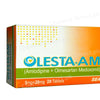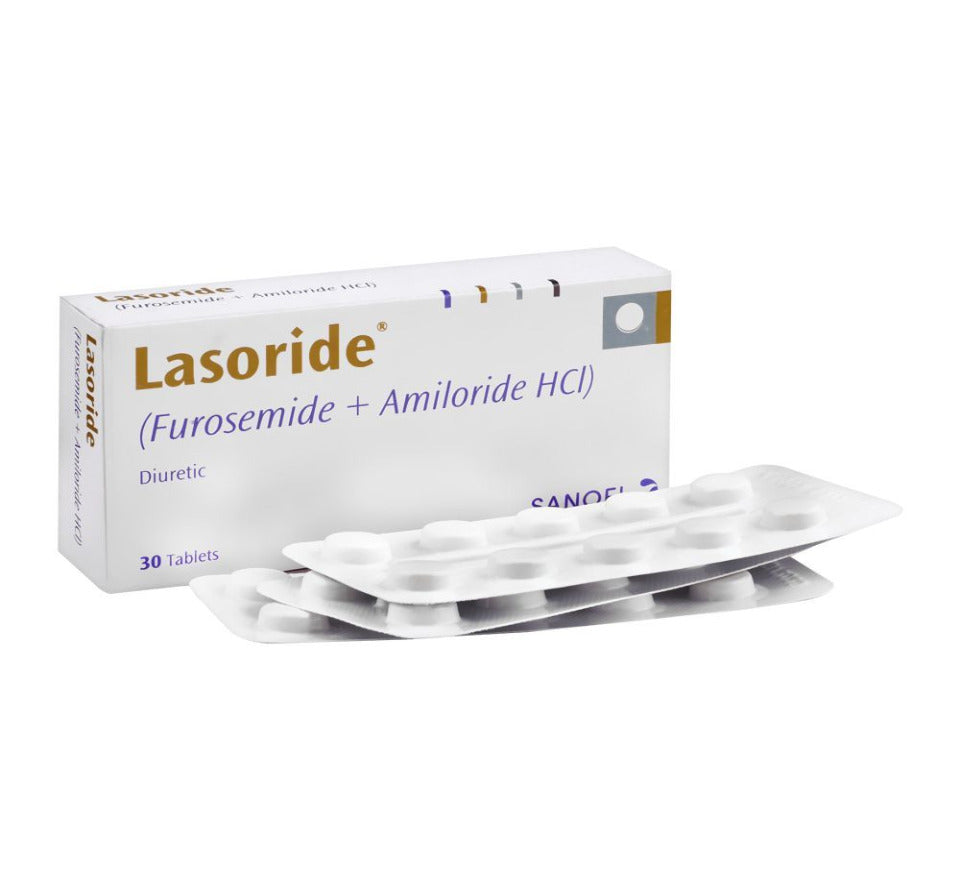Description
Description
SPECIFICATION
40/5Mg
Generics
Furosemide + Amiloride
About
Furosemide : Furosemide is a loop diuretic which acts primarily to inhibit electrolyte reabsorption in the thick ascending Loop of Henle. Excretion of sodium, potassium and chloride ions is increased and water excretion enhanced . Amiloride : Amilorideis a mild diuretic which moderately increases the excretion of sodium and chloride and reduces potassium excretion, and appears to act mainly on the distal renal tubules. It does not appear to act by inhibition of aldosterone and does not inhibit carbonic anhydrase. Amiloride adds to the natiuretic but diminishes the kaliuretic effect of other diuretics.A combination of Furosemide and Amiloride is a diuretic which reduces the potassium loss of furosemide alone while avoiding the possible gastro-intestinal disturbances of potassium supplements .
Indication
Fluid retention associated with chronic congestive cardiac failure (if diuretic treatment is required.Fluid retention associated with acute congestive cardiac failure. Fluid retention associated with chronic renal failure. Maintenance of fluid excretion in acute renal failure, including that due to pregnancy or burns. Fluid retention associated with nephrotic syndrome (if diuretic treatment is required). Fluid retention associated with liver disease (if necessary to supplement treatment with aldosterone antagonists). Hypertension. Hypertensive crisis (as a supportive measure). Support of forced diuresis.
Side Effects
Bruising more easily, getting more infections, feeling weak or tired more than usual , Increased thirst, headache, feeling dizzy or light-headed, fainting, confusion, muscle or joint pains or weakness, cramps or spasms, stomach upsets or uneven heartbeats , Blistering or peeling of the skin around the lips, eyes, mouth, nose and genitals, flu-like symptoms and fever
Drug Interactions
Ramipril, enalapril, perindopril (called ‘ACE inhibitors’) or losartan, candesartan, irbesartan (called ‘angiotensin II receptor antagonists’) , Medicines used as a general anaesthetic , Medicines for diabetes , Theophylline , Phenytoin , Lithium , Cisplatin , Digoxin , aspirin, ibuprofen, ketoprofen or indometacin , Carbamazepine , Aminoglutethimide , Ciclosporin , Methotrexate , Carbenoxolone , Reboxetine , Amphotericin , Corticosteroids , salbutamol, terbutaline sulphate, salmeterol, formoterol or bambuterol , HIV medicine , gentamicin, amikacin, neomycin, netilmicin, tobramycin, vancomycin or high doses of cephalosporins
When not to Use
You are allergic (hypersensitive) to furosemide, amiloride hydrochloride or any of the other ingredients of this medicine ; Signs of an allergic reaction include: a rash, swallowing or breathing problems, swelling of your lips, face, throat or tongue ; You are allergic to sulphonamides such as sulfadiazine or co-trimoxazole ; You have severe problems with your kidneys ; You have severe liver problems .
Precaution
Urinary output must be secured. Patients with partial obstruction of urinary outflow, for example patients with prostatic hypertrophy or impairment of micturition have an increased risk of developing acute retention and require careful monitoring.



